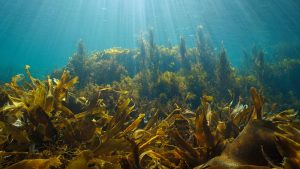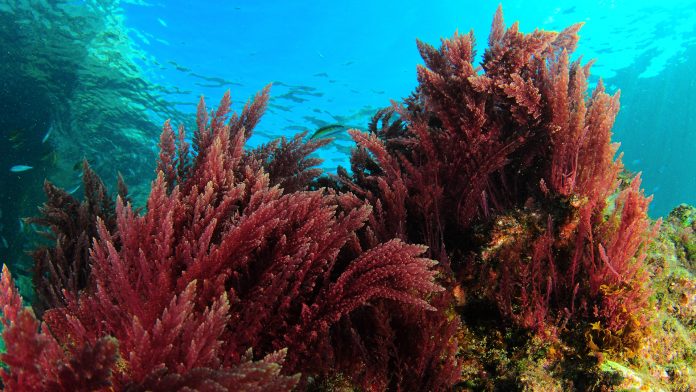Scientists have found evidence to suggest that marine algae are much more resilient to future climate change than previously thought.
Scientists have combined data from the Hawai’i Ocean Time-series programme with new climate model simulations conducted on one of South Korea’s fasted supercomputers to reveal marine algae’s resilience to climate change. The team found that ocean algae have a mechanism, known as nutrient uptake plasticity, which allows them to adapt and cope with nutrient-poor ocean conditions expected to occur over the upcoming years due to global warming.
The study, ‘Nutrient uptake plasticity in phytoplankton sustains future ocean net primary production,’ is published in the journal Science Advances.
Previous beliefs on algae’s response to climate change
Phytoplankton are tiny algae that drift at the ocean’s surface. These algae absorb nutrients when photosynthesising, and take up dissolved carbon dioxide and release oxygen, making up for about 50% of the oxygen we breathe. As phytoplankton are vital for the habitability of our planet, knowing how these algae will respond to global warming is imperative.
There is great uncertainty around how the annual phytoplankton production rate will change over the next 80 years, with the latest report of the Intergovernmental Panel on Climate Change (IPCC) stating an uncertainty of -20% to +20%.
Global warming affects the ocean’s upper layers more than the deeper ones. The upper ocean will become more stratified because of this as warmer water is lighter, reducing the mixing of nutrients from the subsurface into the sunlit layer where phytoplankton reside. Previous studies have argued that this predicted depletion of near-surface nutrients would substantially reduce the ocean’s phytoplankton production, which would potentially have catastrophic effects on marine ecosystems and climate. However, according to the new study, this may not happen.
New analysis on the response to climate change
Data from the Hawai’i Ocean Time-series programme has revealed that ocean algae’s productivity can be sustained, even in nutrient-depleted conditions.

“Under such conditions, individual phytoplankton cells can substitute phosphorus with sulphur. On a community level, one might see further shifts towards taxa that require less phosphorus,” said David Karl, a co-author of the study, Professor in Oceanography at the University of Hawai’i, and co-founder of the Hawai’i Ocean Time-series Study programme.
In subtropical regions, where nutrient concentrations in the surface waters are low, algae take up less phosphorus per amount of carbon stored in their cells, as compared to the global mean. This provides further supporting evidence for the identified plasticity.
How will this plasticity impact ocean productivity?
The team ran a series of climate model simulations to study how this plasticity will impact global ocean productivity over the next few decades. In their model, the researchers turned off the phytoplankton plasticity, which allowed them to qualitatively reproduce previous model results of a decline in global productivity by about 8%.
However, when the plasticity was turned back on, in a way that captured the observations near Hawai’i over the past three decades, the computer simulation revealed an increase in global productivity of up to 5% until the end of the century.
“Regionally, however, these future productivity differences can be much higher, reaching up to 200% in subtropical regions,” said Dr Eun Young Kwon, first author of the study and a researcher at the IBS Center for Climate Physics at Pusan National University, South Korea. With this extra productivity boost, the ocean can also take up more carbon dioxide from the atmosphere, eventually being able to sequester it below the ocean’s surface.
The scientists, inspired by the results of their sensitivity computer model simulations, then looked at ten other climate models, whose data were used in the recent 6th Assessment Report of the IPCC. The results confirmed the author’s initial conclusions.
“Models without plasticity tend to project overall declining primary production for the 21st century, whereas those that account for the capability of phytoplankton to adapt to low nutrient conditions show on average increasing global productivity,” said Dr MG Sreeush, co-corresponding author of the study and a postdoctoral fellow at the IBS Center for Climate Physics.
“Even though our study demonstrates the importance of biological buffering of global-scale ecological changes, this does not imply that phytoplankton are immune to human-induced climate change. For instance, worsening ocean acidification will reduce the calcification rates of certain types of phytoplankton, which can lead to large-scale shifts in ecosystems,” stated Dr Eun Young Kwon. These factors are neither well understood nor represented yet in climate models.
“Future Earth system models need to use improved observationally-based representations of how phytoplankton respond to multiple stressors, including warming and ocean acidification. This is necessary to predict the future of marine life on our planet,” said Professor Axel Timmermann, a co-author of this study and director of the IBS Center for Climate Physics.









